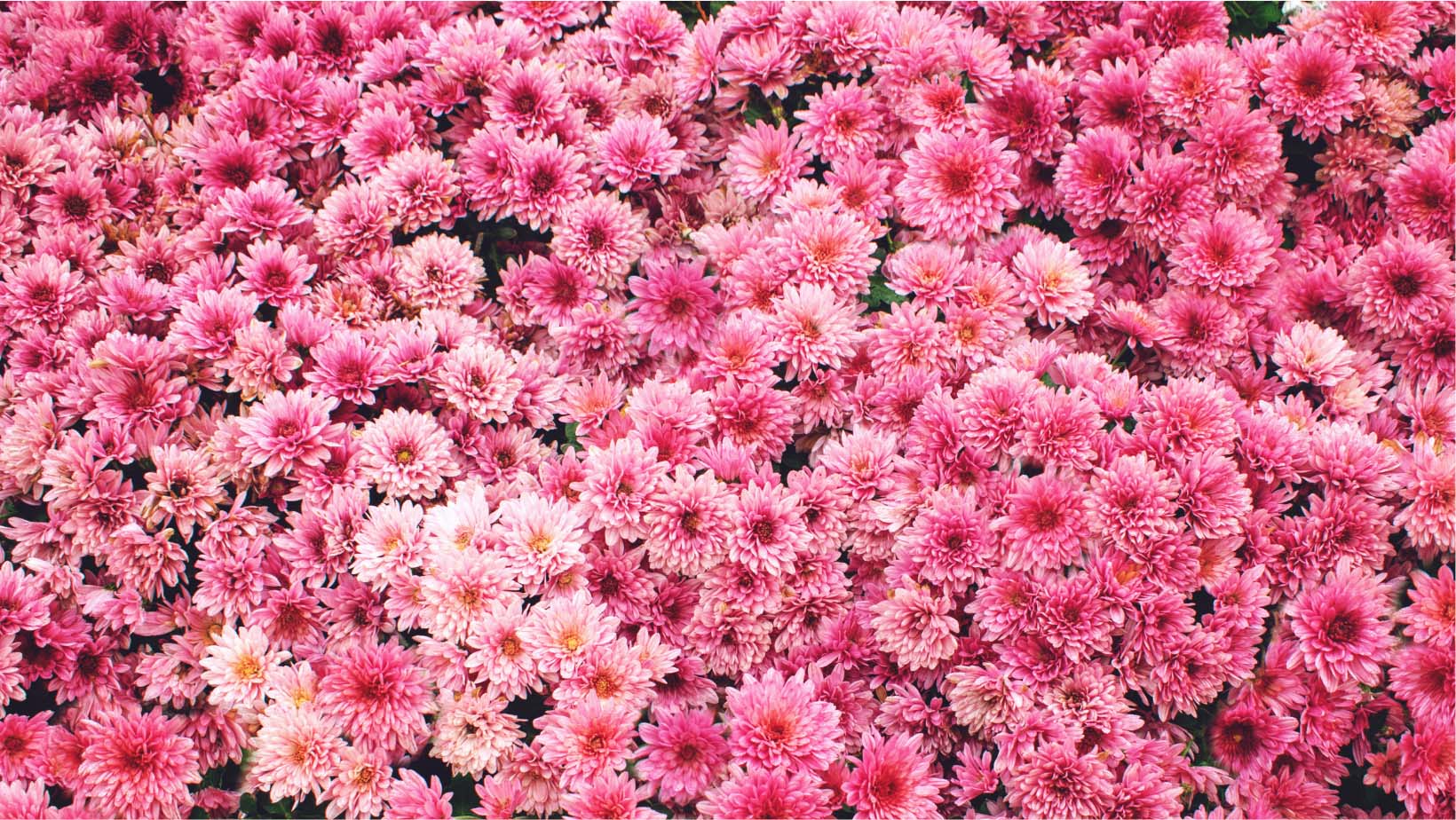Chrysanthemums, often referred to as mums, are beloved by gardeners worldwide for their vibrant colors, varied forms, and long-lasting blooms. These stunning flowers have been cultivated for centuries, with origins tracing back to China, where they were prized for both their beauty and medicinal properties. Today, chrysanthemums are a staple in gardens and homes, admired for their ability to brighten up spaces with their radiant petals in shades ranging from deep purples and reds to bright yellows and whites.
Importance of Growing Chrysanthemums
Growing chrysanthemums is not just about adding a pop of color to your garden; these flowers hold symbolic significance in various cultures. In Asia, they represent longevity and rejuvenation, while in the West, they are often associated with joy and positivity. Beyond symbolism, chrysanthemums are easy to grow and maintain, making them an excellent choice for both novice and experienced gardeners. Their diverse range of varieties allows for flexibility in garden design, whether you’re aiming for a formal flower bed or a more casual, cottage-style garden.
Purpose of the Guide
This comprehensive guide is designed to provide you with all the essential tips and steps needed to successfully grow chrysanthemums in your garden. From understanding their specific needs to mastering the art of propagation, you’ll find everything you need to ensure your chrysanthemums thrive.
Types of Chrysanthemums
Chrysanthemums come in a variety of species, each with its own unique characteristics and care requirements. The two most common types are hardy garden mums and florist mums. Hardy garden mums are perennial plants that can survive winter frosts, making them perfect for outdoor gardens. Florist mums, on the other hand, are typically grown in greenhouses and are often used in floral arrangements due to their large, showy blooms. While they can be grown outdoors, they require more attention and care to thrive.
Ideal Growing Conditions
Chrysanthemums flourish in climates where they can bask in full sun for at least six hours a day. While they can tolerate partial shade, too much shade can lead to leggy growth and fewer blooms. The ideal temperature for growing chrysanthemums ranges between 60-70°F (15-21°C). They prefer cooler weather, making them an excellent choice for fall gardens when many other flowers have finished blooming.
Choosing the Right Chrysanthemum Varieties
Selecting the right variety of chrysanthemum for your garden is crucial to success. Popular varieties include the ‘Sheffield Pink,’ known for its delicate pink flowers and hardy nature, and the ‘Moonbeam,’ which produces vibrant yellow blooms. When choosing, consider your local climate, the specific conditions of your garden, and your aesthetic preferences. Look for healthy plants with strong stems and no signs of disease or pest infestation.
Preparing the Soil
Soil Requirements
Chrysanthemums thrive in well-drained, loamy soil that is rich in organic matter. The ideal soil pH for chrysanthemums is slightly acidic to neutral, between 6.5 and 7.0. Soil that is too acidic or too alkaline can hinder the plant’s ability to absorb nutrients, leading to poor growth and bloom production.
Soil Preparation
Before planting, it’s essential to prepare the soil to create the best possible environment for your chrysanthemums. Start by loosening the soil to a depth of about 12 inches to ensure good root penetration. Incorporate plenty of organic matter, such as compost or well-rotted manure, to improve soil fertility and structure. If your soil is heavy and clay-like, consider adding sand or grit to enhance drainage.
Mulching
Mulching around your chrysanthemums is a great way to retain soil moisture, regulate temperature, and suppress weeds. Organic mulches like straw, bark chips, or leaf mold are ideal. Apply a layer of mulch about 2-3 inches thick around the base of the plants, being careful not to cover the stems directly, as this can lead to rot.
Planting Chrysanthemums
Timing
The timing of planting chrysanthemums is crucial to their success. The best time to plant chrysanthemums is in the spring or early fall. Spring planting allows the plants to establish their root systems before the heat of summer, while fall planting gives them time to acclimate before winter. If planting in the fall, aim for at least six weeks before the first frost to give the plants time to settle in.
Planting Techniques
When planting chrysanthemums, space them about 18 to 24 inches apart to allow for proper air circulation and growth. Dig a hole slightly larger than the root ball of the plant, place the chrysanthemum in the hole, and fill it in with soil, pressing down gently to eliminate air pockets. Water thoroughly after planting to help the roots establish.
Companion Planting
Chrysanthemums can be paired with a variety of plants that complement their growth and beauty. Consider planting them alongside marigolds, asters, or salvias, which thrive in similar conditions. Companion planting can also help with pest control; for example, marigolds are known to repel harmful insects, protecting your chrysanthemums from potential threats.
Caring for Chrysanthemums
Watering
Chrysanthemums require consistent moisture, especially during the growing season. Water the plants deeply once a week, ensuring the soil remains evenly moist but not waterlogged. The best time to water chrysanthemums is in the morning, allowing the foliage to dry during the day and reducing the risk of fungal diseases.
Fertilization
Fertilizing chrysanthemums regularly will promote vigorous growth and abundant blooms. Use a balanced, slow-release fertilizer or a high-potassium feed, which is particularly beneficial during the flowering period. Begin fertilizing in the spring, and continue every four to six weeks until mid-summer. Avoid over-fertilization, as this can lead to excessive foliage growth at the expense of flowers.
Pruning and Pinching
Pinching back the stems of chrysanthemums in the early growing season encourages bushier plants and more flowers. To do this, simply pinch off the top 1-2 inches of each stem when the plants reach about 6 inches in height. Continue pinching until mid-July to control the plant’s size and shape. Additionally, deadheading—removing spent blooms—will encourage continuous flowering and keep the plants looking tidy.
Staking and Support
Some chrysanthemum varieties can grow tall and may require staking to prevent the stems from bending or breaking. Use bamboo stakes or plant supports to keep the plants upright. Insert the stakes into the ground when the plants are still young, and tie the stems loosely with garden twine as they grow.
Pest and Disease Management
Chrysanthemums can be susceptible to pests such as aphids, spider mites, and thrips, as well as diseases like powdery mildew and root rot. Regularly inspect your plants for signs of infestation or disease, and take action promptly. Organic pest control methods, such as neem oil or insecticidal soap, are effective and safe for the environment. Ensure good air circulation and avoid overhead watering to minimize the risk of fungal diseases.
Overwintering Chrysanthemums
Preparing for Winter
As the growing season ends, it’s essential to prepare your chrysanthemums for the winter months. In colder climates, chrysanthemums are vulnerable to frost, so take steps to protect them from the cold.
Cutting Back
After the first frost, cut back the stems of the chrysanthemums to about 6 inches above the ground. This helps the plant conserve energy and reduces the risk of disease over the winter. In milder climates, you may only need to trim the plants lightly.
Mulching for Winter Protection
To insulate the roots and protect them from freezing temperatures, apply a thick layer of mulch—about 4-6 inches—around the base of the plants. This is especially important if you live in an area with harsh winters. For container-grown chrysanthemums, move the pots to a sheltered location, such as a garage or greenhouse, where they will be protected from the worst of the weather.
Propagating Chrysanthemums
Methods of Propagation
Chrysanthemums can be propagated by seeds, cuttings, or division. Each method has its benefits and challenges, and the choice depends on your preference and resources.
Step-by-Step Guide to Propagation
Seeds: Sow seeds indoors in late winter or early spring. Use a seed-starting mix and keep the soil moist. Once the seedlings have grown large enough to handle, transplant them into individual pots or directly into the garden.
Cuttings: Take cuttings from healthy plants in the spring or early summer. Cut a 4-6 inch stem just below a leaf node, remove the lower leaves, and plant the cutting in a pot filled with a well-draining mix. Keep the soil moist and place the pot in a warm, bright location until roots develop.
Division: Divide established chrysanthemums in the spring. Dig up the plant and gently separate the root ball into smaller sections, each with several stems and roots. Replant the divisions immediately and water well.
Tips for Success
When propagating chrysanthemums, ensure the plants are healthy and free of pests or diseases. Use sterile tools to prevent the spread of infections, and provide the newly propagated plants with the right conditions to thrive, such as adequate moisture, light, and warmth.
Common Challenges and Solutions
Dealing with Leggy Growth
Leggy growth, characterized by long, weak stems with sparse foliage, can result from inadequate sunlight or overcrowding. To prevent this, ensure your chrysanthemums receive plenty of light and space them properly when planting. Regular pinching can also help create bushier growth.
Addressing Yellowing Leaves
Yellowing leaves can be a sign of nutrient deficiency, overwatering, or poor drainage. Test the soil pH and adjust if necessary, reduce watering if the soil is consistently wet, and improve drainage by adding organic matter or sand.
Managing Poor Flowering
If your chrysanthemums are not flowering well, the issue may be related to insufficient light, incorrect pruning, or poor soil nutrition. Make sure the plants receive at least six hours of sunlight daily, follow proper pinching and pruning techniques, and feed the plants with a high-potassium fertilizer during the flowering period.
Conclusion
Growing chrysanthemums can be a rewarding experience, adding vibrant color and life to your garden. By understanding the specific needs of chrysanthemums—such as soil preparation, watering, and proper care—you can ensure that your plants thrive and produce abundant blooms.
Whether you’re a seasoned gardener or just starting, chrysanthemums are a fantastic addition to any garden. With their wide range of colors and forms, there’s a chrysanthemum variety to suit every taste and garden style. Don’t hesitate to start growing these beautiful flowers today and enjoy the burst of color they bring to your outdoor space.
Additional Resources
For those looking to delve deeper into chrysanthemum cultivation, consider exploring additional resources such as gardening books, online forums, or local gardening clubs. These can provide further insights, tips, and community support to help you on your gardening journey.
By following these detailed tips and guidelines, you’ll be well on your way to cultivating a stunning display of chrysanthemums in your garden, bringing joy and beauty to your home for years to come.


0 Comments